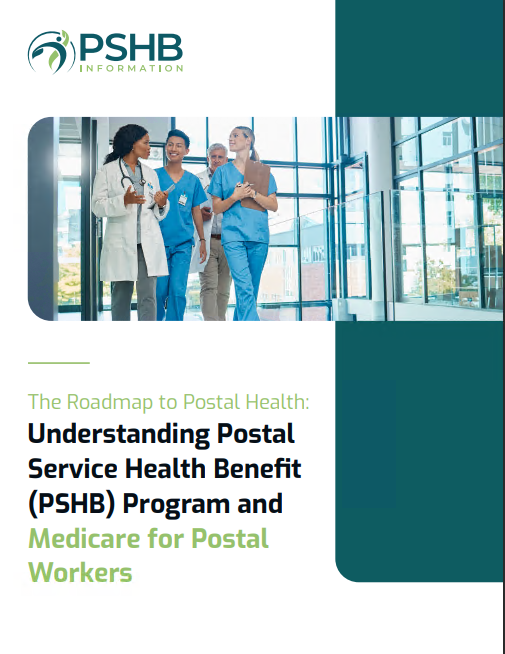Key Takeaways
-
Understanding the differences between FEHB and PSHB can help you make an informed decision about your health benefits in 2025.
-
Knowing how Medicare integrates with these programs is crucial for retirees and their families.
Exploring Your Options: FEHB and PSHB
Navigating federal health benefits can feel overwhelming, especially with the introduction of the Postal Service Health Benefits (PSHB) program. Whether you’re currently enrolled in the Federal Employees Health Benefits (FEHB) program or transitioning to PSHB, understanding the distinctions between the two is essential. This guide will help you weigh the pros and cons to choose the plan that aligns best with your needs.
FEHB: A Legacy Program
For decades, the FEHB program has served federal employees, retirees, and their families. It offers a broad selection of health plans, including HMOs, PPOs, and fee-for-service plans.
-
Who is eligible? FEHB covers federal employees, retirees, and their eligible family members. If you’re a Postal Service employee, you’ll need to transition to PSHB by 2025.
-
Costs and Coverage FEHB enrollees share premium costs with the government, which covers about 70% of the premium. Coverage includes routine care, specialist visits, hospital stays, and preventive services. Plans may also include dental and vision benefits.
-
Medicare Coordination If you’re retired and eligible for Medicare, coordinating FEHB with Medicare can reduce out-of-pocket costs. FEHB remains your primary insurance unless you enroll in Medicare Part B.
PSHB: Tailored for Postal Workers
Starting January 1, 2025, the PSHB program replaces FEHB for USPS employees and annuitants. It’s designed to address the unique needs of postal workers while maintaining comprehensive health coverage.
-
Who is eligible? PSHB is mandatory for active USPS employees, retirees, and their eligible family members. If you’re already covered under a family member’s FEHB plan, you can remain on that plan.
-
What makes PSHB different? While PSHB offers similar types of plans to FEHB, it includes tailored benefits like reduced out-of-pocket costs for Medicare-enrolled members. Additionally, PSHB enrollees benefit from a more streamlined enrollment process.
-
Medicare Integration Medicare-eligible retirees must enroll in Medicare Part B to maintain PSHB coverage. PSHB plans often waive deductibles and reduce copayments for those with Medicare Part B.
Comparing Key Features
Let’s break down the primary differences between FEHB and PSHB to help you decide which program suits your situation:
Eligibility
-
FEHB: Available to all federal employees and retirees.
-
PSHB: Exclusive to USPS employees and annuitants.
Plan Offerings
-
FEHB: Wide variety of plans, including national and regional options.
-
PSHB: Similar variety but tailored to postal employees’ needs.
Premium Costs
-
FEHB: Government covers approximately 70% of premiums.
-
PSHB: Same government contribution rate, but some plans include enhanced Medicare benefits.
Out-of-Pocket Costs
-
FEHB: Varies by plan; deductibles and copayments apply.
-
PSHB: Lower out-of-pocket costs for Medicare-enrolled members.
Medicare Requirements
-
FEHB: Optional to enroll in Medicare Part B.
-
PSHB: Mandatory Medicare Part B enrollment for most retirees.
Transitioning to PSHB: What You Need to Know
If you’re a Postal Service employee or retiree, the transition to PSHB is already underway. Here are some key points to consider:
-
Automatic Enrollment If you’re currently enrolled in an FEHB plan, you’ll be automatically enrolled in a corresponding PSHB plan. However, it’s wise to review your options during Open Season.
-
Open Season Dates The PSHB Open Season runs concurrently with FEHB Open Season, from November 11 to December 9 each year. This is your opportunity to make changes to your plan or review new options.
-
Medicare Integration If you’re Medicare-eligible, enrolling in Part B ensures you maximize the benefits of PSHB, including reduced deductibles and copayments.
Making the Best Choice for Your Needs
Deciding between FEHB and PSHB boils down to your individual circumstances. Here are some questions to help you evaluate your options:
-
Are you retiring soon? If so, consider how Medicare integration will impact your healthcare costs. PSHB’s mandatory Medicare Part B enrollment may offer significant savings.
-
Do you have a preferred provider? Check whether your preferred doctors and facilities are in-network under your potential PSHB plan.
-
What is your budget? Review premium costs, deductibles, and out-of-pocket limits to find a plan that fits your financial situation.
-
Do you require specific benefits? Compare the additional benefits offered by FEHB and PSHB, such as dental, vision, and prescription drug coverage.
FAQs About FEHB and PSHB
What happens if I don’t enroll in Medicare Part B?
If you’re enrolled in PSHB and eligible for Medicare, failing to enroll in Part B could result in losing your PSHB coverage.
Can I switch plans outside Open Season?
You can only make changes outside Open Season if you experience a Qualifying Life Event (QLE), such as marriage, divorce, or the birth of a child.
Will my current prescriptions be covered?
Both FEHB and PSHB plans include prescription drug coverage. If you’re on PSHB and Medicare, your plan integrates with Medicare Part D for enhanced drug benefits.
Are dental and vision benefits included?
Some FEHB and PSHB plans offer dental and vision coverage, but these are often add-ons. Check your plan details to confirm.
Navigating Open Season with Confidence
Whether you’re sticking with FEHB or transitioning to PSHB, Open Season is the time to ensure your health coverage aligns with your needs. Review plan details, compare costs, and consider how Medicare integration will impact your benefits. Don’t hesitate to ask questions or seek guidance—your health and financial well-being are worth the effort.
Choosing the Right Path for Your Health Needs
Understanding the differences between FEHB and PSHB is critical to making an informed decision. Take the time to evaluate your options, review your current and future healthcare needs, and consult resources available to you. By staying proactive, you’ll ensure that your health coverage supports you now and in the future.











